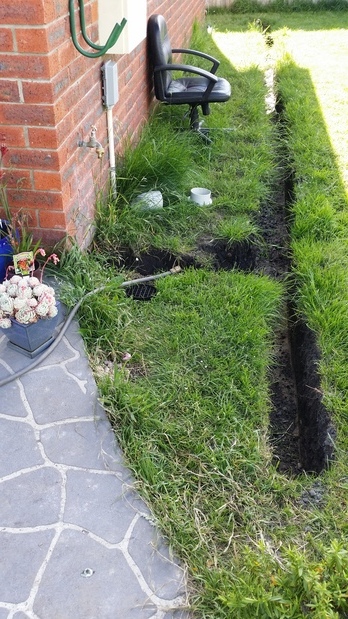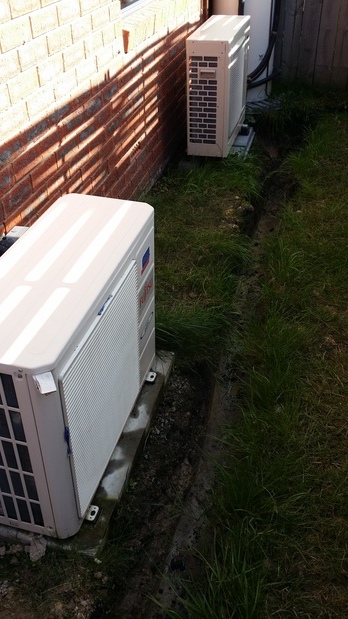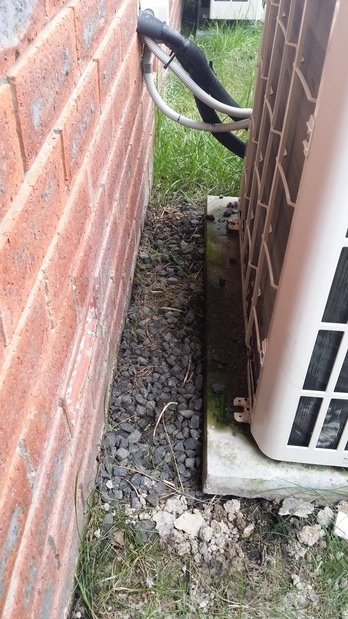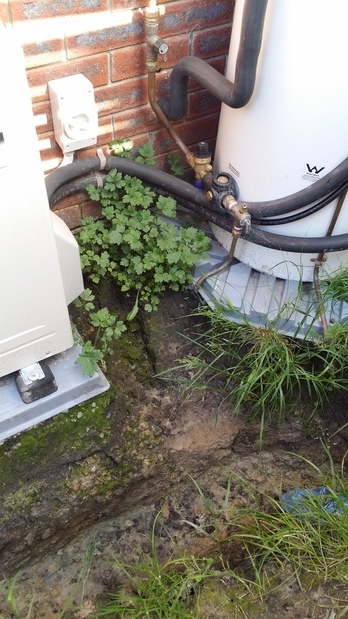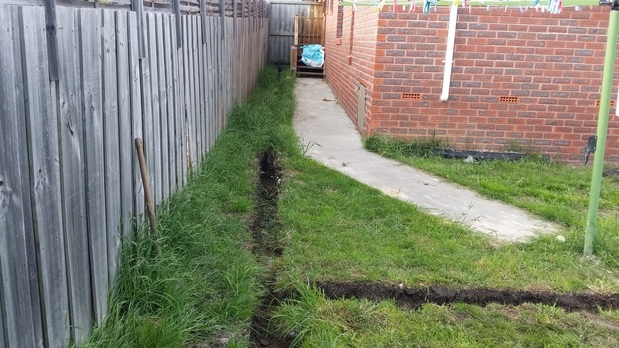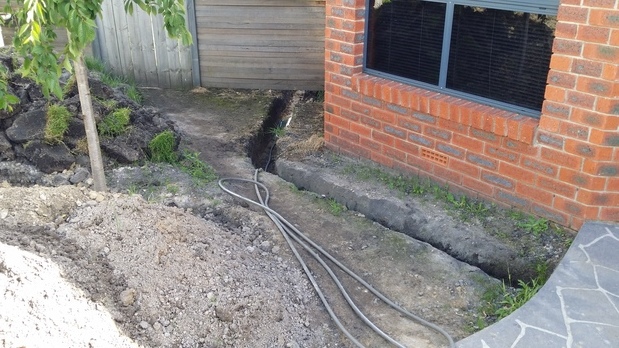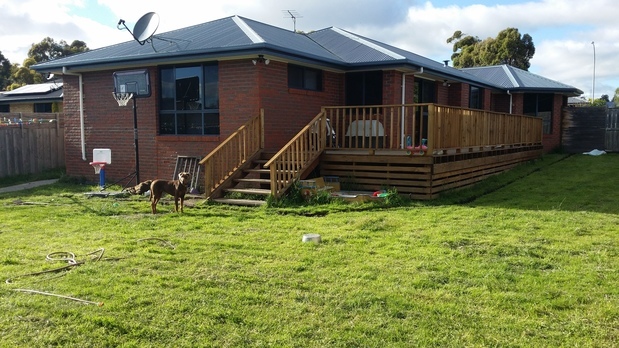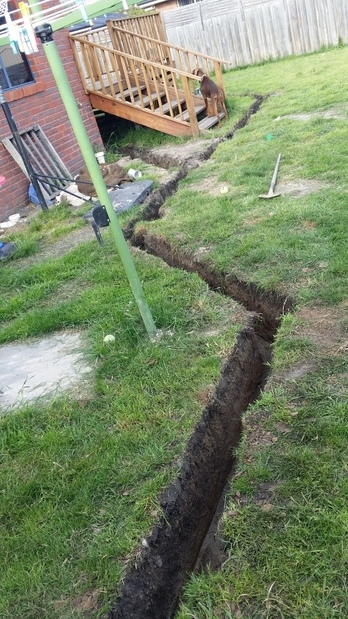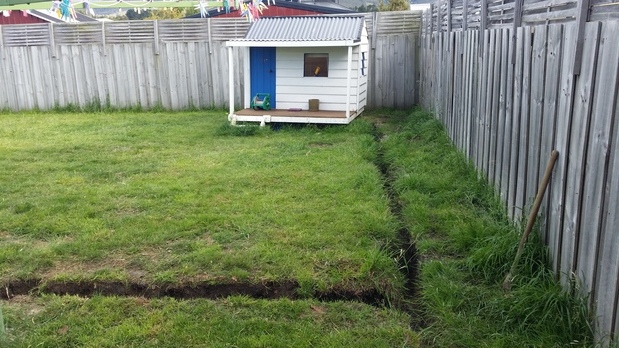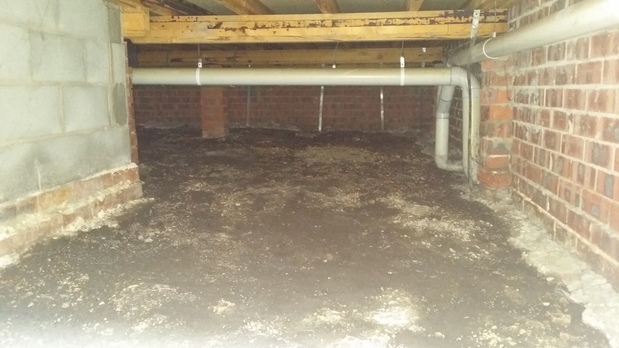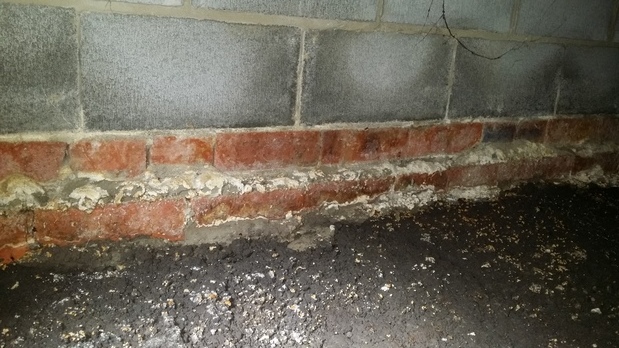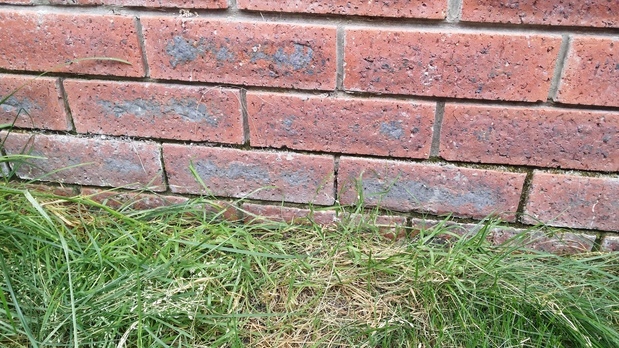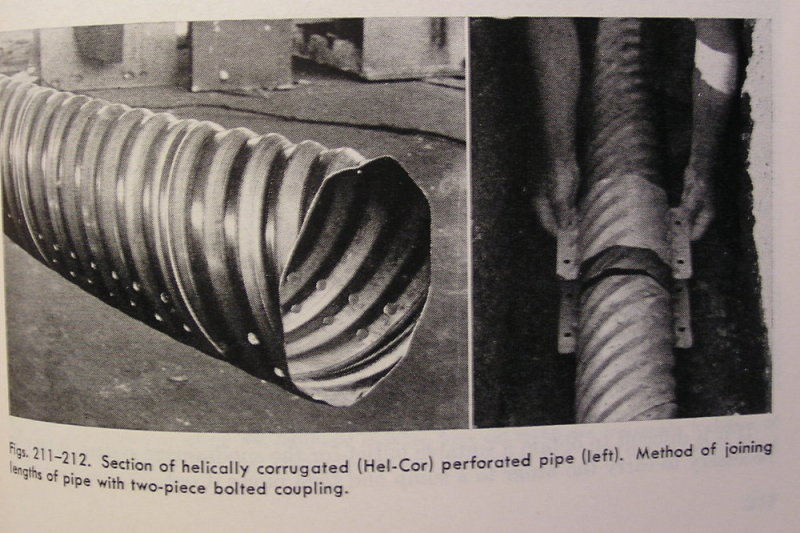ausee
Electrical
- Nov 30, 2016
- 6
Hi,
I have been lurking on this forum for a while, reading oldestguy's posts advocating the use of ASTM C33 concrete sand for French Drains.
I live in Australia, in a single brick house on stumps, no basement. During a particularly wet winter (ground doesn't freeze here), we were getting a mold smell from the carpet. The building inspector had advised installing French drains around the perimeter, as occasionally there had been water pooling under the house. On the side of the house with the problem, there were two heat pumps draining condensate into a local depression, and also a leaking washing machine with tray drain going under the house I think in that area (since fixed). I figure that the moisture was wicking up through the brickwork. Other than from that local depression, the block gently slopes towards the storm water connection. So this local depression on that side of the house had a locally high water table, as the ground was pretty much permanently (year round) squelchy and shaded. The soil is quite clayey, with clay between 20-40cm below the ground. In fact, this used to be the case not just in this area but on the top (highest elevation) side.
I have dug out a drain around the perimeter of the house, with a connection to the stormwater access. I have dug to a depth of about 45-60cm on the side with the damp problem. Since this has been in place, the water initially was welling out of the side of the drain, and now the ground is quite hard. In all cases, I have dug to about 5-20cm below the clay layer. In the rain, it definitely works to channel the water through this trench to the stormwater access point.
My plan had been to fill the entire trench with ASTM C33 spec sand, after placing 100mm PVC sewer pipe with hand-drilled 5mm holes in the trench. Then I would add some grass seed mix to this on top. I figure that it would collect both the surface water and lower the water table in the problem area. Since I don't have a basement, I figure that the main goal is to collect both the surface water and the water that would be assumed to run above the clay layer in the sod. The main water collection points where it would pass under the house are the depression on one side of the house, and the higher elevation side of the house. So if I have encircled the house with a drain that is under the clay/sod junction, and flows along the whole length to the storm water access, then this will prevent the water from passing under the house, and lower the water table by 30cm at least.
I have also tilted the slab under the problem heat pump to drain directly into the french drain.
Are there any problems with this setup? I figure it is already an improvement on the similar gravel/geotextile sock arrangement proposed by a local contractor. I realize that oldestguy might recommend some sort of surface swale to deal with the surface water, but considering I don't have a basement and it seems like the water issue is already solved in the problem area, I figure that what I've got is sufficient to deal with both surface and sub-surface water. My gut feeling is that now the surface water will be removed promptly, and whatever remains will find its way into the French drain and then leave. On the top side, considering that there is basically no slope, I'd be served just as well by digging the french drain without needing to drastically re-contour the landscape.
I have been browsing these threads for reference:
I have been lurking on this forum for a while, reading oldestguy's posts advocating the use of ASTM C33 concrete sand for French Drains.
I live in Australia, in a single brick house on stumps, no basement. During a particularly wet winter (ground doesn't freeze here), we were getting a mold smell from the carpet. The building inspector had advised installing French drains around the perimeter, as occasionally there had been water pooling under the house. On the side of the house with the problem, there were two heat pumps draining condensate into a local depression, and also a leaking washing machine with tray drain going under the house I think in that area (since fixed). I figure that the moisture was wicking up through the brickwork. Other than from that local depression, the block gently slopes towards the storm water connection. So this local depression on that side of the house had a locally high water table, as the ground was pretty much permanently (year round) squelchy and shaded. The soil is quite clayey, with clay between 20-40cm below the ground. In fact, this used to be the case not just in this area but on the top (highest elevation) side.
I have dug out a drain around the perimeter of the house, with a connection to the stormwater access. I have dug to a depth of about 45-60cm on the side with the damp problem. Since this has been in place, the water initially was welling out of the side of the drain, and now the ground is quite hard. In all cases, I have dug to about 5-20cm below the clay layer. In the rain, it definitely works to channel the water through this trench to the stormwater access point.
My plan had been to fill the entire trench with ASTM C33 spec sand, after placing 100mm PVC sewer pipe with hand-drilled 5mm holes in the trench. Then I would add some grass seed mix to this on top. I figure that it would collect both the surface water and lower the water table in the problem area. Since I don't have a basement, I figure that the main goal is to collect both the surface water and the water that would be assumed to run above the clay layer in the sod. The main water collection points where it would pass under the house are the depression on one side of the house, and the higher elevation side of the house. So if I have encircled the house with a drain that is under the clay/sod junction, and flows along the whole length to the storm water access, then this will prevent the water from passing under the house, and lower the water table by 30cm at least.
I have also tilted the slab under the problem heat pump to drain directly into the french drain.
Are there any problems with this setup? I figure it is already an improvement on the similar gravel/geotextile sock arrangement proposed by a local contractor. I realize that oldestguy might recommend some sort of surface swale to deal with the surface water, but considering I don't have a basement and it seems like the water issue is already solved in the problem area, I figure that what I've got is sufficient to deal with both surface and sub-surface water. My gut feeling is that now the surface water will be removed promptly, and whatever remains will find its way into the French drain and then leave. On the top side, considering that there is basically no slope, I'd be served just as well by digging the french drain without needing to drastically re-contour the landscape.
I have been browsing these threads for reference:

